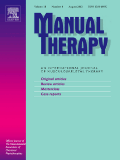
PHYSICAL THERAPY & REHAB
The effect of exercise/stretching on head and shoulder posture in adolescents
Man Ther. 2016 Feb;21:76-8288 adolescents with a forward head and protracted shoulder posture were included in the study. Patients were randomized to either an intervention group, which underwent a 32 week resistance and stretching exercise program followed by a 16 week detraining period, or a control group. The study was conducted in order to determine whether the exercise program was able to improve cervical and shoulder angles in patients and in turn improve function and pain outcomes, and if these potential improvements were maintained after exercise was ceased. Although the training group reported significantly improved cervical and shoulder angles which were maintained after the detraining period, angles were largely comparable to those in the control group. Additionally, the improved posture did not translate to better clinical outcomes.
Unlock the full ACE Report
You have access to {0} free articles per month.Click below to unlock and view this {1}
Unlock NowCritical appraisals of the latest, high-impact randomized controlled trials and systematic reviews in orthopaedics
Access to OrthoEvidence podcast content, including collaborations with the Journal of Bone and Joint Surgery, interviews with internationally recognized surgeons, and roundtable discussions on orthopaedic news and topics
Subscription to The Pulse, a twice-weekly evidence-based newsletter designed to help you make better clinical decisions
Exclusive access to original content articles, including in-house systematic reviews, and articles on health research methods and hot orthopaedic topics
Or upgrade today and gain access to all OrthoEvidence content for just $1.99 per week.
Already have an account? Log in


Subscribe to "The Pulse"
Evidence-Based Orthopaedics direct to your inbox.
{0} of {1} free articles
Become an OrthoEvidence Premium Member. Expand your perspective with high-quality evidence.
Upgrade Now












































































